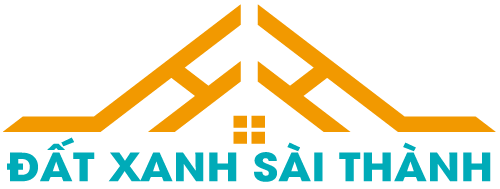What is KPI? Why Do You Need KPIs?
A job performance assessment indicator, or KPI for short, is a measure of how well an individual, department, or organization is accomplishing its objectives. KPIs are represented by various numbers, ratios, quantitative indicators, etc., based on each object’s specific professional attributes.
KPIs are frequently developed at various levels in firms to function as goals as well as a means of tracking development and outcomes.
High-level KPIs will be centered on shared strategic objectives, like hitting a 100% increase in overall revenue in October, 35 provincial projects were finished in the fourth quarter,…
Low-level KPIs, on the other hand, are utilized by departments, individuals, and process systems to assess how well each person is performing in their role. For instance, of an IT company: The degree of upkeep and troubleshooting for websites within a day of the incident (barring situations involving force majeure)
Benefits of applying KPI in business:
Regarding executives and tiers of management:
Propose suitable pay, reward, and disciplinary plans and intuitively, transparently, and accurately monitor employee performance.
Boost the work acceptance process’ effectiveness
Verify that objectives and aspirations can be fulfilled as planned.
With employees:
Recognize how close the work is to being completed to the desired outcomes.
Encourage people to strive for their goals.
identifying errors for prompt correction if the task is running behind schedule
>>> Payroll Services For Businesses in Vietnam
Common Mistakes When Building KPI
We’ll examine the common errors made by businesses while creating KPIs based on the definition of KPI and the previously mentioned KPI examples. Among them are:
1. KPIs are not connected to the business’s strategic objectives
Key performance indicators, or KPIs, as their name implies, have to be significant indicators. To be more precise, they need to be developed and monitored in accordance with the strategic objectives of every division and company. When businesses develop and assess KPIs that are not aligned with specific objectives, they may squander resources and fail to provide the desired outcomes.
Referring back to the previous example, the KPI indication provided to enhance customer conversion rate is quite fair for a website introducing products with the intention of selling and raising income. Conversely, while still significant, metrics like page views and visitor count are used to assess the quality of websites; however, as they lack a correlation, they will not be regarded as key performance indicators (KPIs). closely associated with the desired outcome.
2. Ignore the leading KPIs and concentrate exclusively on the outcome KPIs.
Metrics such as “Increase website sales conversion rate by 20%” are examples of KPIs that quantify an outcome without illuminating the process that led to it. When an indication is invisible, it becomes unclear and challenging to attain without creating a series of KPIs that reflect additional causes (in this example, “launching three new products of the year” may be one such KPI).
KPIs should, in general, have a strong cause-and-effect relationship with one another. To guarantee the desired results, businesses should thus also strike a balance between the two categories of KPIs on causes and results.
3. Create fixed KPIs that don’t change or require modification over time.
Using the previous example as a model, suppose that the sales conversion rate reaches 20% after only half the anticipated three-month period. In this case, what action should the company take?
(1) Maintain constant KPIs while allowing staff members to unwind and lose interest in working hard for the remainder of the day?
(2) Or should KPIs be tailored to the pace at which the website and business are developing?
Given that no one wants to squander resources and stagnate when they are experiencing great growth momentum, the solution is most likely rather straightforward. As a result, the KPI will now be tailored to the specific circumstances of the company. amid a similar vein, amid trying circumstances, the assessment indicators ought to be maximized to guarantee that workers can manage the workload sensibly and competently.
* Take note that KPIs shouldn’t be used to assess how well innovative field goals are working.
Creative vocations, like those of designers, painters, software developers, architects, data analysts, and others, require constant invention and don’t allow for recurrence. Certain things even happen only once or very quickly, making KPIs useless in these situations. The OKR (Objectives & Key Results) paradigm is the best option under these circumstances. An increasing number of businesses, including Intel, Google, LinkedIn, Deloitte, and others, are implementing OKR in goal management and internal operations.
>>> Top job Front-end developers in Vietnam
Instructions On How to Build and Apply KPIs in The Business
Step 1: Find the department or KPI developer
There are two primary approaches:
Method 1: The human resource management team assists in ensuring that KPIs adhere to the aforementioned standards by providing guidance to the functional departments/departments as they develop their KPI system for positions within their department/department. This method states that the head of the department, or department/department, develops the KPI since they have the best awareness of the responsibilities and duties associated with the various jobs and titles within the department. The KPI development for subordinates is more segmented the larger the department/Department/Department.
Benefits: KPIs will be very practical and provide a clear picture of the department’s duties and responsibilities.
Cons: When a department establishes its own objectives, there’s sometimes a lack of objectivity and an overly conservative goal-setting process. The senior management team’s and the human resources team’s review and evaluation are required if this approach is to be used.
Method 2: A set of KPIs for the department/department/department will be provided by the senior management team in the human resources department. This approach, in contrast to the previous one, guarantees the method’s objectivity and science. Nonetheless, it’s possible that the provided KPIs are unrealistic and inaccurately reflect the responsibilities and roles of the department. After the KPI system is constructed, the functional department must assess and evaluate it in order to solve this issue.
Step2: Determine KPIs
Making ensuring that KPIs are tightly connected with the department’s or company’s specific goals is the most crucial step in the process.
Following your agreement on KPIs with the department’s or company’s objectives, the following stage is to assess each performance indicator using SMART criteria:
S-Specific: Particular objective
M-Measurable: Measurable objective
A – Attainable: A attainable objective
R – Relevant: Practical Objectives
T – Timebound: The objective has a set due date.
In addition to having a negative impact on the evaluation specifically, KPIs that fail to meet the SMART criteria will also negatively impact the organizational management system as a whole.
Should the goal fail to satisfy particular requirements, the worker is unsure about how to proceed and attain the intended level of productivity.
Since indicators cannot be measured, performance results lack significance.
The objective is too far away if KPIs are not realistic (realistic) or achievable (achievable), and staff will not be able to meet it even with their best efforts. Psychological effects include exhaustion, melancholy, and a lack of desire to work.
Employees find it challenging to maintain control over their job because the KPIs lack a time restriction, making it unclear how long they have to do a task or when.
Also take note that the performance measures chosen as key performance indicators (KPIs) will change based on the nature of the business, activities related to individual employees, and overall departmental KPIs. KPIs, for instance, can be used to track metrics like sales volume, profit margin per item, product quality, customer support, job completion times, client recommendations, staff churn, and so on.
KPIs that are in line with the objectives and prospects of the company are necessary for even roles that don’t seem likely to contribute to its financial growth.
For instance, the technical department’s key performance indicator is to raise the internet connection’s quality.
Using a website for a product introduction as an example, a KPI may be created in the manner shown below:
KPI: A 20% increase in the website sales conversion rate
The website’s current conversion rate is stuck at 12%; in order to compete with rivals in the same market, companies need to figure out how to boost it to 20%.
Timeframe for implementation: six months.
Frequency of performance reporting: Every month
Source of measurement data: quantity of shoppers / quantity of persons signing up for product trials
The product manager of the website is the one in charge of monitoring KPI.
Step 3: Assess KPI fulfillment
It’s time to apply KPIs to management, namely to productivity and human resources, after they have been successfully developed for departments and job positions inside the company.
Since measurable criteria have been used to design KPIs, each KPI item will undoubtedly have a unique evaluation technique. All jobs and KPIs can be broadly categorized into three primary groups, which are as follows:
Group A: requires a lot of time to execute and has a significant impact on the shared objective.
Group B: implements quickly and significantly impacts the shared objective OR/AND implements slowly and significantly impacts the shared objective.
Group C: less impact, less time.
Depending on how important they are, each of these KPIs will have a different weight, such as A: 50%, B: 30%, and C: 20%.
Step 4: KPI evaluation and pay bonus relationship
A specific pay and bonus will be determined by the KPI system creator for each KPI fulfillment level. The enterprise’s leadership levels, the department’s top management, the individual creating the KPI system, or the employees themselves reaching a consensus can all set this policy in advance.
At the conclusion of each evaluation period, an acceptance session is typically held to assess the work results. The assessment must to be thorough and impartial, taking into account the views of coworkers, superiors, clients, and staff members.
Step 5: Modify and enhance KPI
KPIs are measurable and may be monitored over time. First, make sure the metrics are consistent by going over the recently produced KPIs. After the final KPI is set, stick with it for a minimum of a year, even if it can take a few months for everything to reach peak performance.
With the help of the aforementioned essay, hopefully, enterprises, employers, and human resources will have a good understanding of how to evaluate KPIs and make appropriate use of this assessment tool.
Contact
Aniday was born to help businesses take advantage of a network of experts/headhunts to find and attract talents.
- Website: https://aniday.com/












